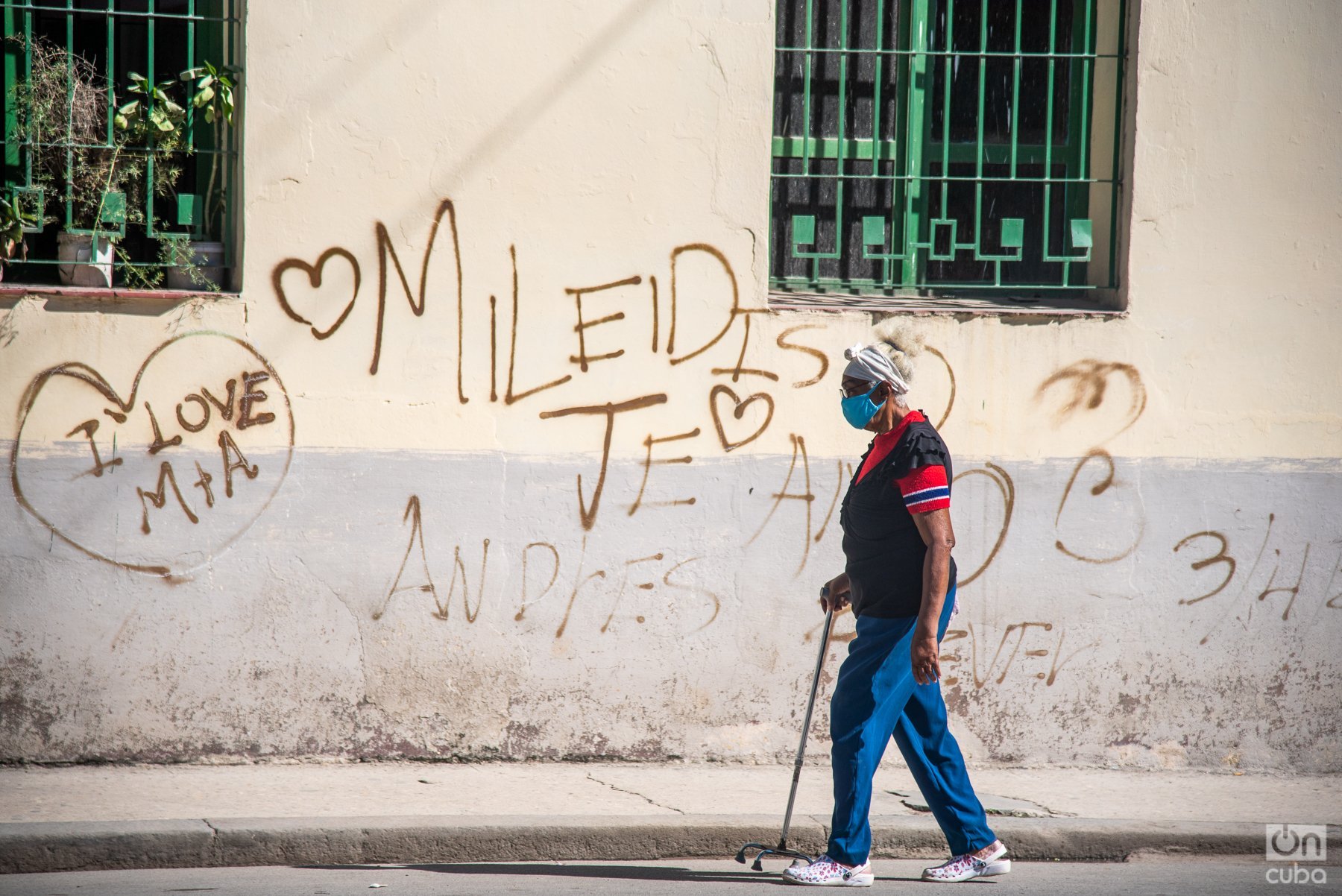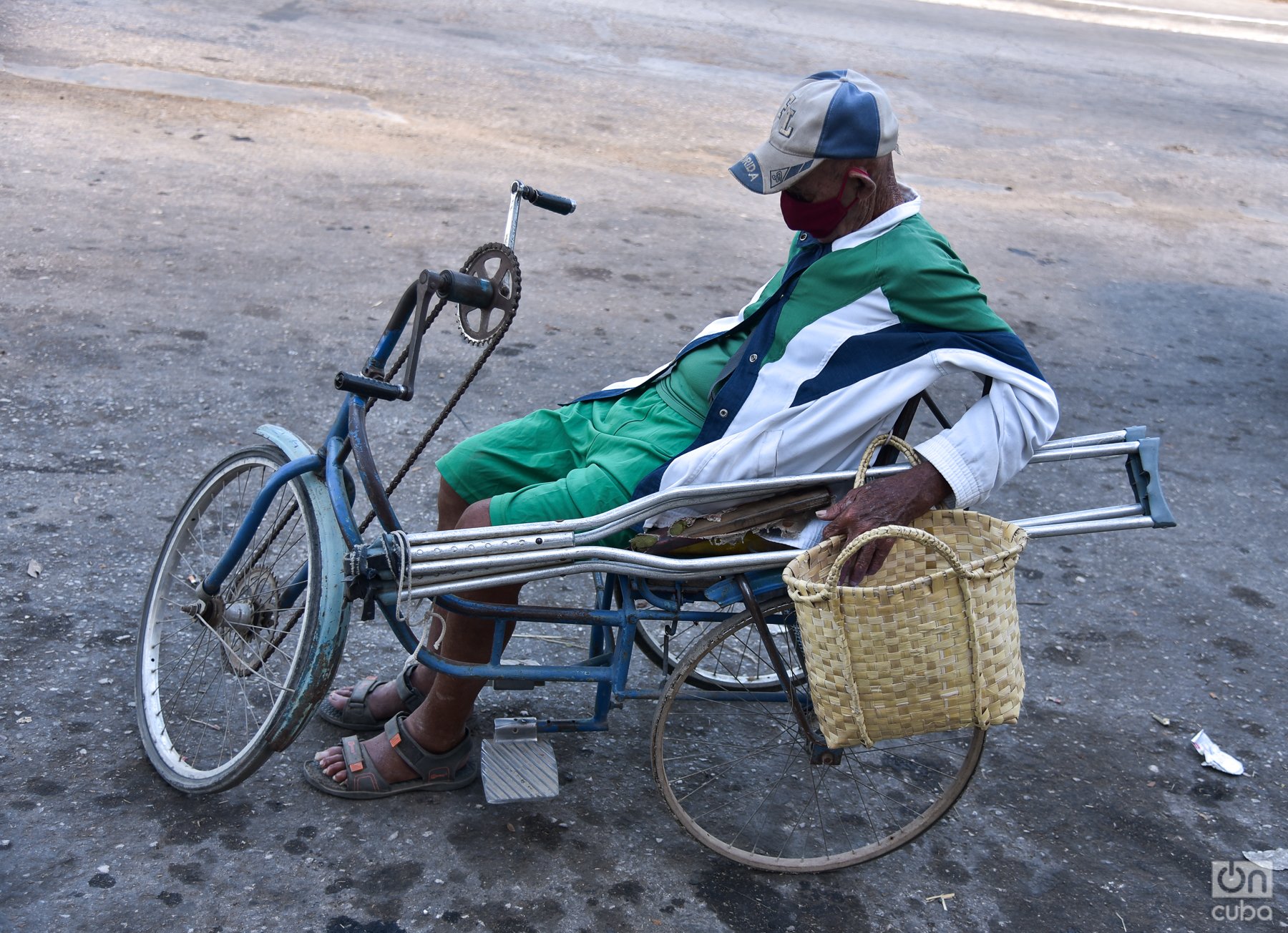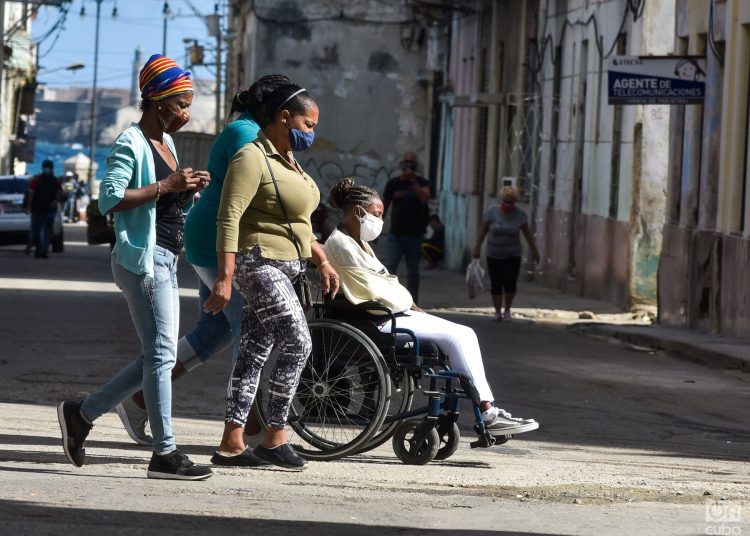Celia is 81 years old. She has been living for about five years with a diagnosis of dementia that prevents her from fending for herself. She can barely walk a few steps with the help of her only child and her husband, who divide their time between taking care of her and working to ensure the support of the family. Celia’s illness has disabled her almost totally and has made her forget who she was and who she loved.
Caridad is 94 years old. For more than five years she has needed permanent attention. Although she has not lost her lucidity, the physical wear and tear of her more than nine decades and a skin cancer that she has survived for more than three decades have taken their toll. Her daughters take care of her, they are also close to being seniors. Caridad cannot walk without a walker and she requires help with basic activities.
Like Celia and Caridad, in Cuba, many disabled or incapable elderly people have a growing need for stable care.
With regard to the elderly, both on the island and in Latin America, two variables maintain a proportional relationship: as life expectancy increases, the number of years of life in which one is unhealthy increases.
This has been defined by international organizations, whose recent statistics show that “increased life expectancy does not mean that people are necessarily living those additional years in good health.”
“Unhealthy life years” are understood to be those that are lived in a situation of disability, due to a condition of illness, physical exhaustion, or mental detriment (sometimes all at the same time) for a long period of time.
In Cuba, the country most aged in the region (with more than 22.3% of the population aged 60 or over), a growing challenge is the arrival of old age for people who are almost or completely unable to care for themselves.
The data on how many dependent older adults with total or partial disabilities live in Cuba today is not broken down in public statistics. However, some figures and studies on the subject provide an idea of the magnitude of the phenomenon.

Elderly and disabilities in figures
More frequent health conditions in the elderly mean that they can lead to states of invalidity or disability.
An investigation by academic Rolando García published in 2019 points to dementia, and in particular Alzheimer’s (70% of the patients diagnosed with dementia suffer from it), as the first reason for disability in older adults in Cuba and the main cause of dependency and need of care.
There were an estimated 170,000 people with dementia at the time, equivalent to 1.2% of the population. But, according to projections described in the aforementioned study, the disease has an increasing trend of up to 260,000 in 2030 and up to 520,000 in 2050.
After the age of 65, dementias affect 10% of all older adults; at 75 years 30%, and after 90 years the percentage exceeds 50%, according to the study.
The results of the last Population and Housing Census (2012) reported 6,415 people aged 96 or over. In addition, in the first quarter of 2017 statistics registered in the Department of the Elderly, Social Assistance and Mental Health of the Ministry of Public Health (MINSAP), registered 2,153 centenarians.
It is a fact that, with age, vulnerability increases. A cause of permanent disability whose highest incidence is verified in the range of 80 to 89 years (32.9%) are bone fractures, especially hips. A study carried out by several Cuban researchers and published in 2022 showed that some 12,000 hip fractures occur every year in Cuba; and the number tends to increase.
The World Health Organization (WHO) confirmed that in the first two decades of the 2000s, the global trend has been an increase in disability. Diseases and health conditions, such as heart disorders, diabetes mellitus, stroke, and cancer, have caused the greatest number of deaths and years of healthy life lost — including years lived with disability.
Cuba has not been an exception. In the 2021 Health Statistical Yearbook, heart disorders, malignant tumors and cerebrovascular diseases, along with diabetes mellitus, were among the leading causes of death. They are also conditions that reduce the number of years of healthy life. The highest prevalence of diabetes in the country precisely occurs in people over 60 years of age, with figures above 200 per 1,000 inhabitants.
In 2022, 22.3% of the Cuban population was 60 years of age or older, according to the report “The Aging of the Population. Cuba and its territories,” published by the National Office of Statistics and Information (ONEI) in May 2023. Forecasts for 2030 predict that up to a third of the Cuban population will be 60 years of age or older. Forecasts state that, of the 3.3 million older adults who will then live on the island, around one million will be over 75 years of age.

Assistance and care beyond the family
The care of adults with restricted mobility in Cuba is essentially a matter of family responsibility. In 2021, the number of capacities in Residential Nursing Homes was 8,045; for daycare in the so-called Casas de Abuelos, there were only 1,093. This is equivalent to a ratio of 336 nursing home places for every 100,000 elderly people and 46 for every 100,000 for daytime stays. Quotas are far from real needs.
According to Alberto Fernández, head of MINSAP’s Department for the Elderly, Social Assistance and Mental Health, “80% of the elderly who are currently in homes” have disabilities that make it difficult for them to live alone. But, it is not about elderly with absolute immobility.
In practice, the care of the totally immobilized elderly in Cuba falls on the family. The nursing home policy contemplates that these are not for life, and once the causes are modified, the return of the elderly to the family environment is sought, Fernández confirmed. In the case of the totally disabled elderly, the State provides partial assistance.

To receive state aid, the elderly must be diagnosed by a doctor as a “bedridden patient” or “prostrated.” In the first case are those who suffer from chronic diseases, but are not completely immobilized. The second includes those who have totally restricted mobility, due to a chronic illness or another cause, such as a hip fracture.
As regulated by the national medical dietary resolution issued by the Ministry of Domestic Trade and MINSAP, prostrated patients (not bedridden) are assigned a monthly diet of meat (1 lb. and a half), milk (10 liters) and chicken (1 kg). The food is delivered to the grocery stores of the beneficiaries. However, since the end of 2022, interruptions in the delivery of milk have been reported in provinces such as Villa Clara, according to beneficiaries from that province, consulted for the preparation of this article.
Apart from food assistance, a toiletry module is allocated which, in the case of bedridden people, consists of a bath soap and a laundry soap. Meanwhile, the prostrated receive a textile module twice a year that includes a towel, two meters of antiseptic cloth and a meter of sanitary oilcloth, along with six bath soaps and six laundry soaps.
The aid is delivered to designated industrial product markets in each municipality. In the course of 2023, delays in the delivery of the textile module have been reported due to instability in the supply, as confirmed by the source consulted in the domestic trade sector in Villa Clara.
In addition to food and toiletry assistance, a study published in 2018 by two researchers from the University of Havana warned that, since 2003, when the National Plan for the Care of the Elderly was approved, the lines of work for the elderly have been focused on: health and nutrition, physical activity and individual development and social participation. However, none contemplates permanent care at home.
The researchers affirm that it is necessary to pay attention to “the possibility of granting special services such as subsidies and social and home assistance (monetary, in kind and/or services) to older adults with disabilities, living alone, bedridden or with restricted mobility.”
Despite the fact that in Cuba the State usually subsidizes the provision of direct care to people with disabilities, for the preparation of this article no references of aid of this type to relatives of bedridden elderly people with total or severe dependence were found.
In Cuba, the indicators of higher life expectancy can be recognized as achievements of greater well-being; but it is also about the challenge of guaranteeing care in a society in which more and more elderly people live, and a significant part of them live many unhealthy years of life.
The recently approved Family Code, in its Article 355, stipulates what refers to family fostering of older adults or people with disabilities. According to the Code, the foster care of these people is the action that “occurs between people who are not legally obliged to give each other food, or between people who are emotionally close or united by a notorious emotional bond, regardless of the existence or not of a relationship of relationship.”
In this sense, the Family Code in Cuba does not regulate the institutional care of the elderly, while it does regulate, for example, that of minors. This exempts the State from direct responsibility for guaranteeing the institutionalization of people who, in addition to being in that age range, have disabilities. The alternative that emerges as a variant given the growing need for care is the private initiative. However, the cost of these services is based on what the caregiver demands and is not, in most cases, an affordable option for everyone.
We all know or have had in our family a partially or completely disabled older adult. We all know a Celia or a Caridad. Responding to the needs of our disabled older adults cannot fall only on the family. The problem has a social dimension. For this reason, beyond the conceived policies and the declared intentions of managing this scenario as a country, the question that hangs over Cuba is not cleared up, our elderly live longer, but do they live better?










